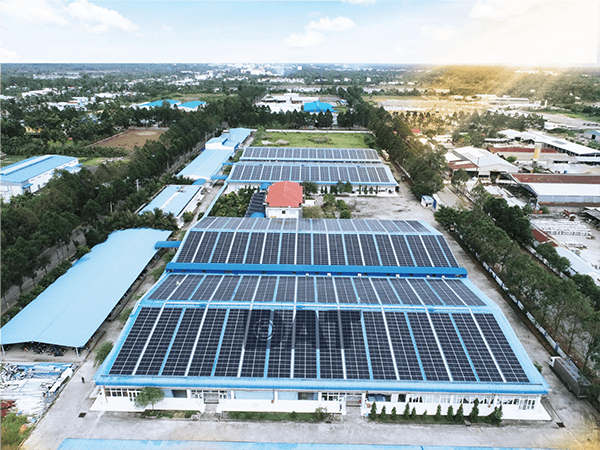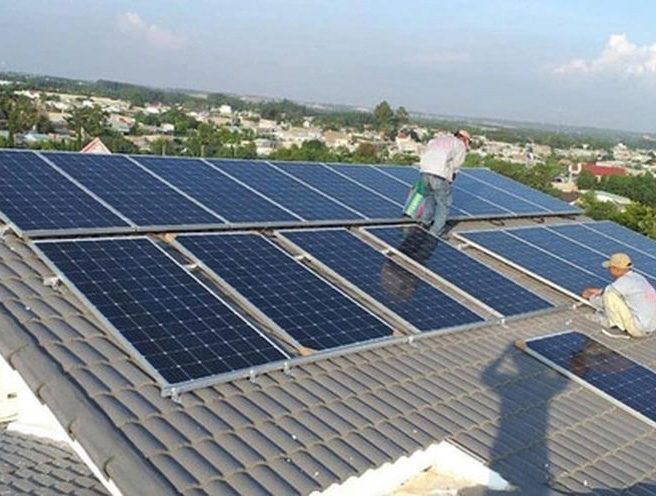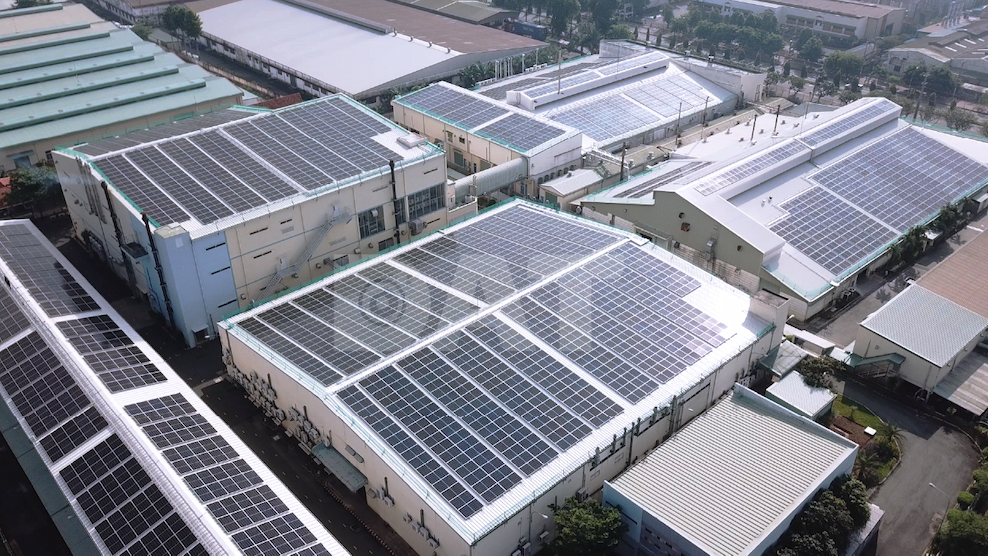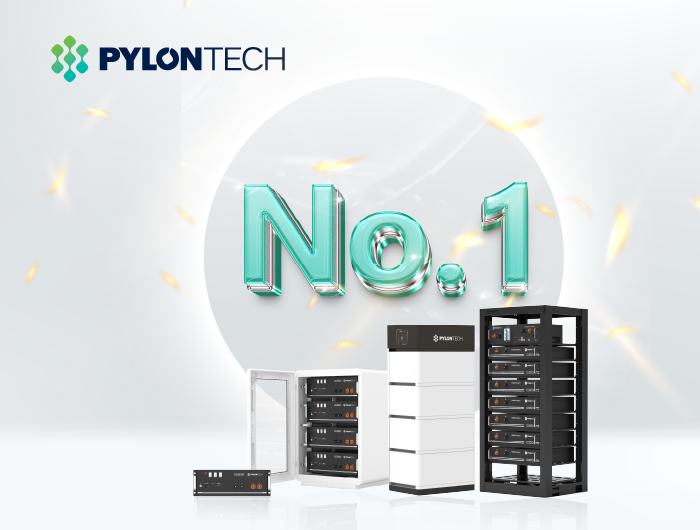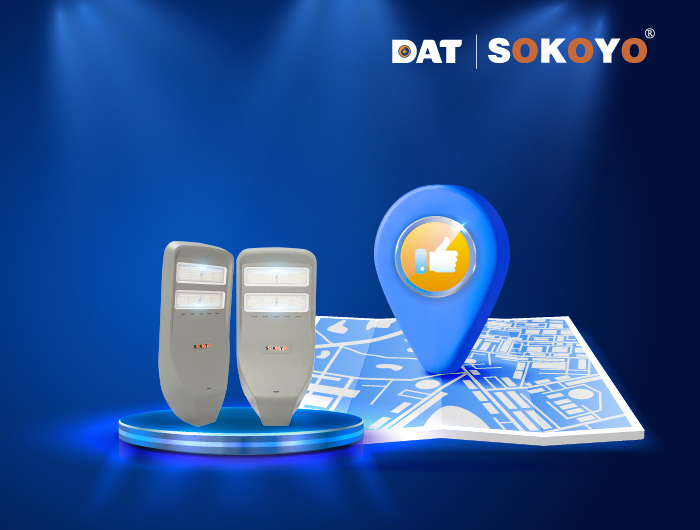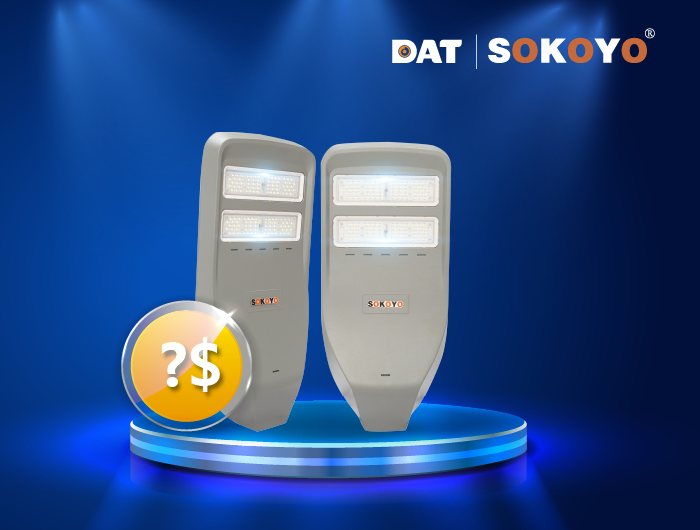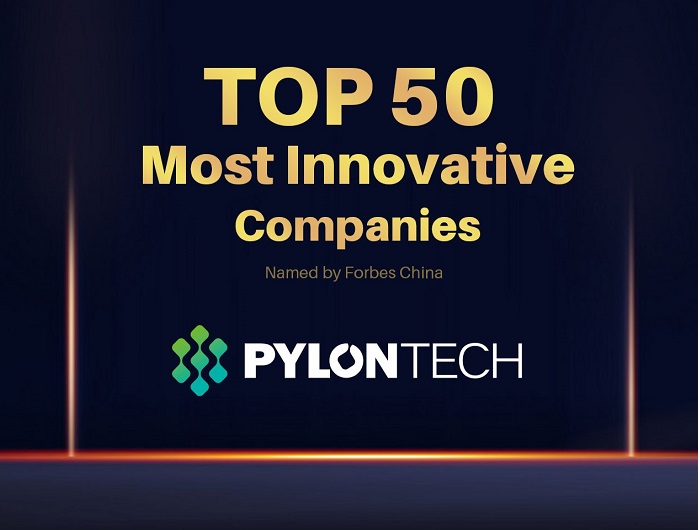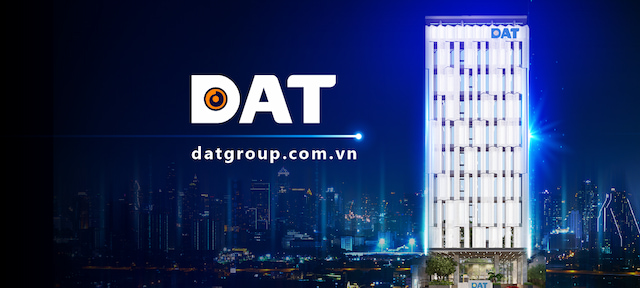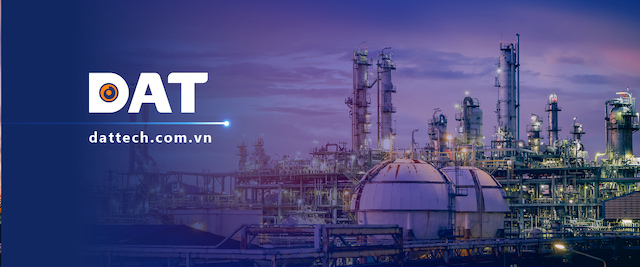Chi phí đầu tư 1MWp điện mặt trời
Hiện nay các nhà máy, công ty, nhà xưởng đang tiêu tốn một khối lượng điện năng rất lớn cho công tác sản xuất, kinh doanh. Chi phí hóa đơn tiền điện tiêu thụ hằng tháng chiếm một phần rất lớn trong cơ cấu chi phí của doanh nghiệp. Một giải pháp ưu việt để tiết kiệm điện đó chính là đầu tư vào điện mặt trời. Vậy hiện tại chi phí để đầu tư 1MWp điện mặt trời hiện tại là khoảng bao nhiêu? Thủ tục đầu tư, thời gian hoàn vốn… và một số thông tin khác về việc đầu tư cụ thể như thế nào?
1. Chi phí đầu tư 1MWp điện mặt trời
2. Thành phần hình thành chi phí một dự án điện mặt trời áp mái 1MWp
3. Những doanh nghiệp nào phù hợp để lắp đặt và sử dụng hệ thống điện mặt trời áp mái khoảng 1MWp?
4. Cách tính thời gian hoàn vốn cho dự án điện mặt trời áp mái 1MWp
5. Lợi ích của việc đầu tư 1MWp điện năng lượng mặt trời
6. Nguyên lý hoạt động của hệ thống điện mặt trời
7. Về DAT Solar
1. Chi phí đầu tư 1MWp điện mặt trời
Chi phí, giá dự kiến khi đầu tư 1MWp điện mặt trời tại thời điểm hiện tại năm 2023 là khoảng 12 tỷ đến 13 tỷ VNĐ (Dao động tùy vào yêu cầu và chất lượng sản phẩm dùng cho dự án).

2. Thành phần hình thành chi phí một dự án điện mặt trời áp mái 1MWp
Trong tổng dự toán của một hệ thống điện mặt trời thì thường suất đầu tư được phân bổ theo tỷ lệ như sau :
| Thành phần | Tỷ lệ | Chi tiết |
| Tấm pin năng lượng mặt trời | 60% | Tấm pin mặt trời là thành phần chính và quan trọng nhất trong hệ thống điện năng lượng mặt trời. Chúng chiếm tới 60% chi phí đầu tư hệ thống. Ngoài ra, việc lựa chọn các tấm pin tốt, thương hiệu nổi tiếng để có độ bền và hiệu quả cao cũng đội thêm cho chi phí tấm pin. |
| Inverter | 20% | Inverter hòa lưới là thiết bị quan trọng tiếp theo mà hệ thống điện mặt trời nào cũng cần có. Và đương nhiên thương hiệu inverter, chất lượng inverter cũng ảnh hưởng lớn đến chi phí của toàn hệ thống. Tuy nhiên, các doanh nghiệp nên cân nhắc sử dụng những thương hiệu inverter uy tín để đảm bảo hiệu suất hoạt động, tính hiệu quả và độ bền về lâu dài. |
| Hệ cân bằng hệ thống (hay hệ khung giàn giá đỡ) | 10% | Mái tôn sẽ ít tốn chi phí nhất, sau đó là mái bằng, mái ngói. |
| Thiết bị ngoại vi | 5% | Junction box, tủ điện DC, AC và các phụ kiện khác. |
| Nhân công, lắp đặt | 5% | Các chi phí về nhân công được tính bằng việc triển khai lắp đặt thực tế, cài đặt hệ thống, thí nghiệm, kiểm tra, chạy thử vận hành, kết nối hệ thống với lưới điện, chi phí O&M điện mặt trời… |
3. Những doanh nghiệp nào phù hợp để lắp đặt và sử dụng hệ thống điện mặt trời áp mái khoảng 1MWp?
Đầu tiên, chúng ta phải tính tới những doanh nghiệp, văn phòng, công ty sản xuất, cơ sở kinh doanh, cơ quan hành chính có nhu cầu sử dụng điện năng nhiều vào ban ngày; có diện tích mái nhà xưởng, mái nhà kho nhàn rỗi lên từ 5.000m² trở lên.
Doanh nghiêp có thể đầu tư lắp đặt hệ thống để tự sử dụng hoặc tham gia mô hình ESCO (được lắp điện mặt trời miễn phí mà không cần bỏ vốn đầu tư), tận dụng nguồn năng lượng sạch để tối ưu chi phí tiền điện phải trả hằng tháng.
Cuối cùng, điện năng lượng mặt trời là một trong những giải pháp hiệu quả dành cho các doanh nghiệp muốn hướng đến việc trở thành hình ảnh một doanh nghiệp xanh, sản phẩm chất lượng xanh thân thiện với môi trường.
4. Cách tính thời gian hoàn vốn cho dự án điện mặt trời áp mái 1MWp
Để tính toán thời gian hoàn vốn dự án điện mặt trời bạn cần thực hiện các bước sau:
- Bước 1: Xác định tổng chi phí đầu tư cuối cùng.
- Bước 2: Xác định lợi nhuận hàng năm. Tổng hợp các lợi ích tài chính hàng năm của doanh nghiệp, bao gồm chi phí điện tiêu thụ (nếu không dùng điện mặt trời mà dùng điện lưới bình thường thì chi phí sẽ là bao nhiêu) và khoản thanh toán từ việc bán điện (nếu có).
- Bước 3: Thực hiện phép chia tổng chi phí đầu tư cuối cùng cho lợi ích tài chính hàng năm. Kết quả sẽ là số năm bạn cần để hoàn vốn.
(Bài toán các công ty tư vấn sẽ có con số cụ thể cho chủ đầu tư)
Thông thường đối với dự án có công suất khoảng 1MWp, thời gian hoàn vốn thường rơi vào khoảng 4,5 – 5 năm. Tuy nhiên với vòng đời dự án lên đến gần 30 năm thì doanh nghiệp bạn hoàn toàn có thể hưởng được nhiều lợi ích và tiết kiệm hàng tỷ đồng mỗi năm nhờ tiết kiệm chi phí điện.
5. Lợi ích của việc đầu tư 1MWp điện năng lượng mặt trời
Những lợi ích mà điện năng lượng mặt trời đem lại là vô cùng thiết thực và có giá trị cao về mặt kinh tế. Mặt khác, nhu cầu sử dụng điện ngày một tăng cao dẫn đến tình trạng thiếu hụt nguồn cung thì lắp đặt điện mặt trời thật sự là giải pháp giúp giảm áp lực lên các đường dây truyền tải lưới điện và giúp khách hàng chủ động hơn trong việc sử dụng điện.
- Tiết kiệm nhiều chi phí tiền điện hằng năm
Tiết kiệm chi phí điện năng là lợi ích đầu tiên và lớn nhất mà doanh nghiệp nhận được khi quyết định lắp đặt điện mặt trời. Nguồn điện sạch tạo ra từ hệ thống có thể phục vụ cho các hoạt động sản xuất, kinh doanh, giúp doanh nghiệp giảm mua điện từ EVN đặc biệt là giá điện giờ cao điểm, quản lý nguồn điện hiệu quả, tiết giảm chi phí vận hành, nâng cao hiệu quả kinh doanh. Đặc biệt là hệ thống điện mặt trời có tuối thọ lên tới 25 – 30 năm nên đầu tư một lần và hưởng lợi ích về lâu dài cũng là vấn đề doanh nghiệp cần quan tâm khi muốn đầu tư hệ thống.
- Giảm nguy cơ thiếu điện do quá tải
Lắp điện mặt trời không chỉ có lợi ích cho doanh nghiệp mà còn tác động tích cực đến công tác quản lý vận hành nguồn điện của quốc gia. Hệ thống lưới đện sẽ ít gặp phải tình trạng quá tải ở một số khu vực, đặc biệt là ở các khu công nghiệp, khu chế xuất đòi hỏi cần một khối lượng điện khổng lồ cho hoạt động sản xuất.
- Đạt chứng chỉ xanh, tăng uy tín và lợi nhuận
Các doanh nghiệp ứng dụng công nghệ xanh có cơ hội rất lớn trong thu hút vốn đầu tư và gia tăng lượng khách hàng. Theo khảo sát của Nielsen, 75% khách hàng ưu tiên chọn sản phẩm xanh, nhờ đó doanh số của các thương hiệu cam kết phát triển bền vững cũng tăng hơn 4% trên toàn cầu so với những thương hiệu khác chỉ tăng dưới 1%
Việc xây dựng thương hiệu “xanh” cũng giúp doanh nghiệp đến gần khách hàng hơn, đồng thời mở rộng cơ hội để hợp tác với các đối tác nước ngoài. Với những doanh nghiệp có sản phẩm xuất khẩu đi Âu Mỹ, chẳng hạn như ở các ngành dệt may, giày da… các đối tác thường có yêu cầu về phát triển bền vững, sản xuất song song với bảo vệ môi trường; nên lắp đặt điện mặt trời trên mái nhà xưởng sẽ giúp doanh nghiệp hướng đến hình ảnh doanh nghiệp xanh và đáp ứng được các tiêu chuẩn khắt khe đó.
- Làm mát văn phòng, nhà xưởng
Một trong những lợi ích khác khi lắp điện mặt trời là giúp giảm nhiệt độ cho mái nhà xưởng, tránh được các đợt nắng nóng. Do các tấm pin được lắp trên mái đã hấp thu bức xạ mặt trời để tạo ra điện, giữ lại nhiệt năng ở trên bề mặt tấm pin nên hạn chế được một phần nhiệt lượng tỏa xuống mái, làm cho nhà xưởng sẽ mát mẻ hơn. Nhất là đối với các nhà máy đang sử dụng mái tôn, vật liệu mái phổ biến ở Việt Nam.
Mái nhà xưởng mát hơn cũng giúp tiết kiệm thêm nhiều chi phí sử dụng điều hòa, quạt công nghiệp, hệ thống làm mát. Đồng thời, giúp công nhân cảm thấy thoải mái hơn khi không phải làm việc ở môi trường quá nóng bức, tăng năng suất lao động.
6. Nguyên lý hoạt động của hệ thống điện mặt trời
– Tấm pin năng lượng mặt trời hấp thụ ánh nắng và chuyển thành dòng điện DC cung cấp cho Inverter.
– Inverter (Bộ hòa lưới) chuyển đổi dòng điện DC (một chiều) từ những tấm pin mặt trời thành dòng điện AC (xoay chiều) cùng pha, cùng tần số và điện áp để hòa vào lưới, cung cấp cho doanh nghiệp.
– Nếu đủ nắng, tấm pin sẽ sản xuất ra điện đủ dùng cho hoạt động. Hệ thống sẽ ưu tiên sử dung điện năng lượng mặt trời. Ngược lại nếu trời thiếu nắng thì hệ thống sẽ tự động lấy điện lưới bù vào đảm bảo hoạt động bình thường.
– Nếu lượng điện từ tấm pin năng lượng mặt trời phát ra mà không sử dụng hết thì sẽ đươc đẩy ra lưới, điện lực sẽ thực hiện việc lắp đặt công tơ 2 chiều miễn phí, để thực hiện việc đo đếm lượng điện dư thừa từ hệ thống điện năng lượng mặt trời.
– Hệ thống sẽ tự động ngắt khi điện lưới bị cắt để đảm bảo an toàn cho lưới điện và người sử dụng. Hệ thống sẽ tự động chuyển sang chế độ ngủ đông khi trời tối và hoạt động lại vào sáng ngày hôm sau ngay khi có ánh nắng trở lại.
– Hệ thống hoạt động hoàn toàn tự động, có chức năng giám sát từ xa để theo dõi sản lượng điện thực tế hằng ngày qua smart phone hoặc máy tính. Các sự cố về điện cũng được hệ thống cập nhật và gửi thông báo ngay đến người sử dụng để điều chỉnh và sửa chữa kịp thời.
7. Về DAT Solar
Hơn 17 năm qua, DAT Solar luôn kiên định với chiến lược đầu tư, hợp tác và phát triển bền vững, mang đến những sản phẩm chất lượng toàn cầu, giải pháp điện năng lượng mặt trời thông minh giúp gia tăng sự hiệu quả cho hơn 10.000 khách hàng, đối tác trên khắp cả nước.
Bên cạnh đó, Hệ sinh thái giá trị toàn diện của DAT là sự tổng hòa của các yếu tố vượt trội: đội ngũ gần 350 nhân viên với 50% là kỹ sư ứng dụng; hệ thống sản phẩm đến từ các đối tác toàn cầu như Canadian Solar, INVT, SMA, Sungrow, Sokoyo, Schneider Electric cùng chính sách bảo hành chính hãng, kinh nghiệm cung cấp, triển khai hơn 10.000 hệ thống điện mặt trời có tổng công suất hơn 800MWp và năng lực cung ứng quy mô lớn… DAT Solar nhận được sự đánh giá cao và hài lòng từ phía khách hàng, đáp ứng mọi yêu cầu kỹ thuật, tính thẩm mỹ và chất lượng cho các dự án điện mặt trời lớn.
Quý doanh nghiệp, nhà đầu tư có nhu cầu triển khai đầu tư điện mặt trời, kết nối ngay với DAT Solar qua số hotline 1800 6567 (miễn phí cước gọi). Chúng tôi sẵn sàng đồng hành trọn vòng đời dự án cùng bạn ngay hôm nay.
Xem thêm: Lắp đặt Điện mặt trời miễn phí, tiết kiệm hơn 2 tỷ đồng tiền điện mỗi năm


